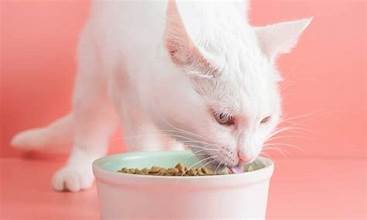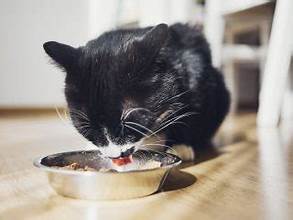Cats are known for their independent and sometimes finicky nature, especially regarding food. While it can be frustrating to have a picky eater, ensuring your cat is still getting all the necessary nutrients for a healthy life is essential. This guide will help you understand why your cat may be picky and offer tips on feeding them a balanced and nutritious diet.
Why is Your Cat Picky About Food?
Before diving into solutions, it’s crucial to understand the potential reasons behind your cat’s picky eating habits. This knowledge will help you, the cat owner, to make more informed decisions about your cat’s diet. Here are some common causes:

Health Issues:
Cats with dental, digestive, or other underlying medical conditions may be reluctant to eat. A trip to the vet can help rule out health concerns.
Taste Preferences:
Like people, cats have personal preferences. Some prefer wet food, others prefer dry kibble, and some are drawn to specific flavors like chicken, turkey, or fish.
Routine Changes:
Cats are creatures of habit, and changes in their environment, feeding times, or stress can decrease their appetite.
Spoiling with Treats:
Cats may become fussy if offered too many treats or table scraps, as they may hold out for tastier options.
How to Feed a Picky Cat a Healthy Diet
1. Find the Right Cat Food
Choosing the right food is crucial in encouraging your picky eater. Cats must have a diet rich in high-quality protein, fat, and essential nutrients. Here’s how to choose:
Experiment with textures and flavors:
Cats are sensitive to texture, so try wet food, dry kibble, or semi-moist varieties. Flavor-wise, try different proteins like chicken, turkey, salmon, or beef to find your cat’s preference.
Opt for high-protein, grain-free options:
Cats are carnivores, meaning they need meat. Look for cat foods with a high meat content and fewer fillers, such as grains.

Rotational feeding:
Switching between different flavors or brands can help your cat stay interested in its food and avoid getting bored with a single option.
2. Make Mealtime More Exciting
Sometimes, cats are picky because they need more stimulation during mealtime. You can enhance their eating experience by:
Warming up wet food:
Cats are likelier to eat food that smells and feels fresher. Warming their wet food to room temperature can enhance the smell and make it more enticing.
Interactive feeders or puzzle toys:
Food puzzles or slow feeders can add fun to mealtime and engage your cat’s hunting instincts, making eating more enjoyable.
Mixing wet and dry food:
Combining damp and dry food may provide the best of both worlds—added hydration from the wet food and the crunchy texture of dry kibble.
3. Add Toppers to Make Food More Appealing
If your cat is ignoring their regular food, try adding healthy toppers to make it more appealing.
Bone broth or tuna water:
Adding a small amount of unsalted bone broth or water from a can of tuna can improve the flavor of your cat’s food without compromising nutrition.

Cooked chicken or turkey:
Small amounts of plain, cooked chicken or turkey can entice even the pickiest eaters.
Freeze-dried treats:
Sprinkle freeze-dried meat treats, like chicken or salmon, on top of your cat’s food to add flavor and texture.
4. Establish a Consistent Feeding Schedule
Cats thrive on routine, so establishing a consistent feeding schedule is not just a suggestion but a responsibility that can help stimulate their appetite. As a cat owner, you are in control of this routine.
Scheduled feedings:
Offer meals simultaneously every day. Take away any uneaten food after 20-30 minutes to prevent grazing, which can lead to disinterest in meals.
Limit treats:
Treats should be given sparingly, as too many can lead your cat to ignore its regular food and wait for something tastier.
5. Avoid Reinforcing Picky Eating Behavior
It’s important not to reward your cat’s picky behavior by constantly offering new foods whenever it turns up its nose. This discipline will help you, the cat owner, establish a healthy eating routine.
Stick to one type of food:
Be consistent. Once you’ve found a healthy, balanced diet that meets your needs, don’t switch foods too frequently or give in to begging for treats or table scraps.
Monitor portion sizes:
Even if your cat seems picky, overfeeding can lead to obesity or other health problems. Ensure you offer appropriate portions for your cat’s age, size, and activity level.
6. Consider Nutritional Supplements
If your cat is a fussy eater concerned about getting all the necessary nutrients, you may want to consult your vet about adding supplements.
Omega-3 fatty acids:
These supplements promote healthy skin and fur and may help boost your cat’s overall health.
Probiotics:
If your cat has digestive issues, adding probiotics to their diet can improve gut health and increase their appetite.
When to Consult a Vet
If your cat refuses food or is losing weight, vomiting, or showing signs of illness, it’s essential to seek veterinary advice. Lengthy refusal to eat can lead to serious health problems, such as hepatic lipidosis (fatty liver disease).
Final Thoughts
Feeding a picky cat a healthy diet can be challenging, but with patience and the right plan, you can ensure they get the nutrition they need. Whether it’s experimenting with flavors and textures, making mealtime more engaging, or adding enticing toppers, there are lots of ways to get your cat to eat healthily. Remember to establish a consistent routine, avoid excessive treats, and consult a vet if you’re concerned about their eating habits.




